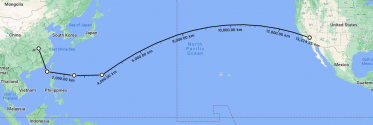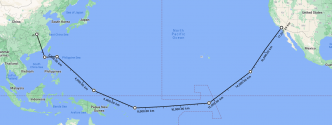Your envisaging needs work. Japan is not going to get nuclear anything; the balance of power is going to keep shifting China's way until it's clear to Japan that the US has no hope of containing China or prevailing in war. At that point the permanent interest of survival will kick in and Japan will send the US a Dear John letter. Japan will understand that its only security from China is in abandoning the US and behaving itself.Well indeed. I can envisage a situation where Japan gets its own nukes (to the extent it doesn't already have them) and asks US forces to leave. However, that doesn't solve the problem of H20 having to cross neutral territory to attack CONUS.
We can assume Japan will be either on the US side or will observe strict armed neutrality and attempt to intercept both H20 and B21trying to cross its territory. If Russia is also strictly neutral, that leaves H20 with a problem in attacking CONUS.
As for Russia, there's another permanent interest at play here: The permanent interest Russia and China share in breaking America's knees. Russia will keep integrating with China economically, politically, and militarily whether or not there's a piece of paper formalizing it. Even if Russia wants to have a rapprochement with Europe, that'll be far easier to do and with much better results for Russia when America has its knees broken. H-20 overflights are the least of it - Russia and China are going to fully integrate their nuclear forces so that an attack on one is an attack on the other.
The permanent overriding interest for Russia and America is breaking America's knees. Once that's done, we can speculate about whether the alliance has any more depth than that.




